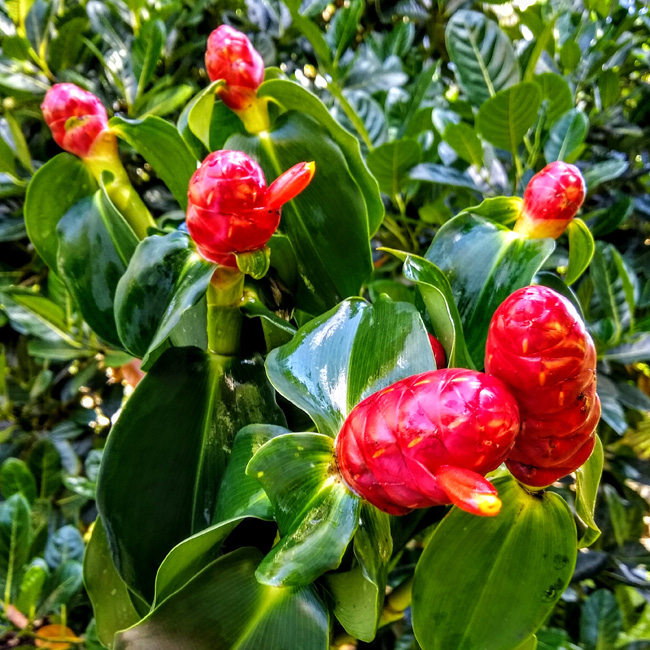

This plant is quite easy to care for and may grow so well in plant containers that you will have to prune it often. The grated rhizomes add a spicy zest to a many recipes. While the fragrant liquid inside the bracts of pinecone ginger is the only part of the plant I’ve had experience using, many cultures have used the rhizomes for a variety of culinary and medicinal purposes. Not only are the rhizomes of common ginger edible, but so are its leaves and shootsso feel free to chop them up finely and use them as a seasoning! The leaves and shoots, meanwhile, have a less pungent flavor than the rhizome.


Can you eat red ginger?Ĭommon ginger, also called culinary ginger, is one of the most popular edible types. Above you see a pretty species planted worldwide in the tropics, Red Ginger, sometimes called Ostrich Plume, ALPINIA PURPURATA. The sap may cause brief, minor skin and eye irritations. Is red ginger poisonous?Īll parts of Red Ginger are reported as mildly toxic, causing cardiac effects. Keep soil moist, watering freely in dry weather. Shampoo Ginger, Pinecone Ginger (Zingiber zerumbet) It can be used as a hair cleansing shampoo and as an ingredient in lotions, shampoos and cosmetics. Hawaiians would also use the red ginger’s stem to cure stomachaches and headaches.When gently squeezed, a replenishable clear, fragrant liquid can be oozed from the cone. In Hawaii, royalty wore leis of red ginger in ceremonies. Cut off flowers at the ground once they’ve passed their prime. Info: This container plant may attract bees, butterflies or certain wild birds to your balcony garden. You can also plant offsets or divide the rhizomes for propagation. Propagation: The red ginger plant rarely produces seeds, but if it does, the seeds will take up to three weeks to germinate, and from two to three years to become a mature, flowering plant. But this plant is generally healthy and easy to care for. Pests and Diseases: Red ginger can be plagued by aphids, mealybugs, earwigs, thrips, scale, fungus, root rot and nematodes.

If you live in a colder area, bring your red ginger into an indoor garden during the winter.įertilizer: The red ginger plant grows best in rich soil, so fertilize monthly with a high- nitrogen liquid fertilizer. The plant's foliage will begin to die at 41 degrees. Temperature: Do not let red ginger experience temperatures below 45 degrees Fahrenheit for long periods of time. Water: When it comes to watering the red ginger plant, make sure its soil constantly moist. Light: Partial sun is fine, but red ginger will grow best in full sun.


 0 kommentar(er)
0 kommentar(er)
